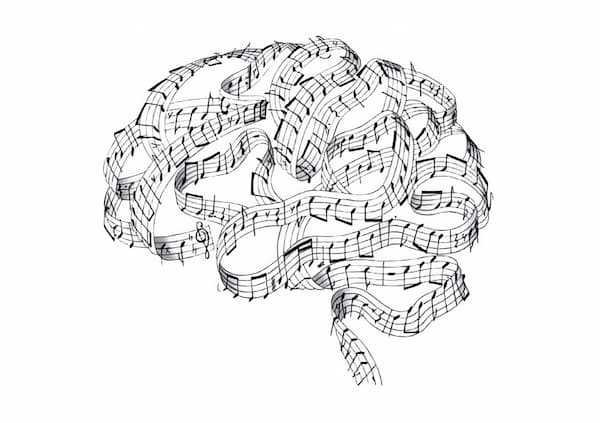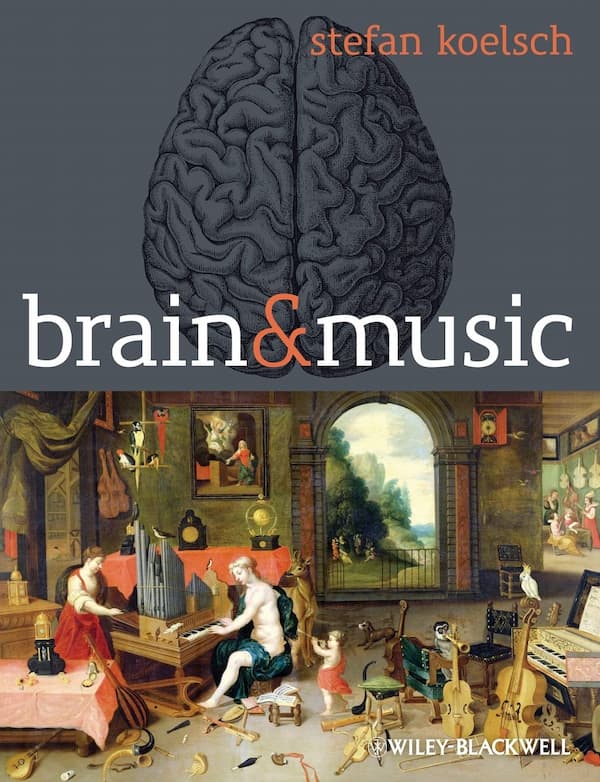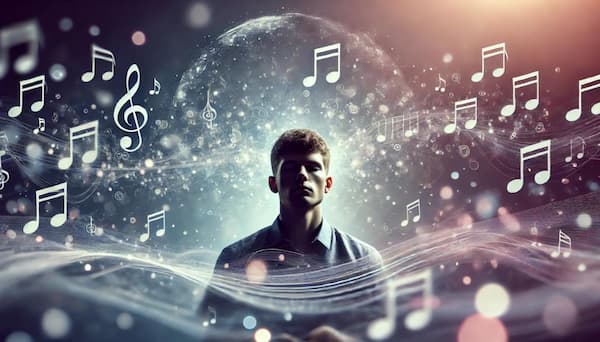My first word was actually a command.
Picture rather an insubstantial baby – consisting mostly of a tuft of white-blonde hair – strapped into the back seat of a car. My dad was driving our family somewhere and had chosen the gravelly vocals of Tom Waits as the soundtrack to the journey. As the song ‘Downtown’ wound to a close, a tiny voice piped up from the backseat.
“Again!”
That’s right, the unbearably catchy refrain of the chorus of ‘Downtown’ was enough of a reward to inspire a small child to make the leap from inarticulacy to speech. The truth is, music in its many varied forms engages with our physiology and neurology in profound and fascinating ways. In this article, we’ll take a look at an enlightening study that clarified the role of dopamine in how we experience our favourite compositions.
When Music Gives You Chills

Most of us have experienced music that we enjoyed so much that it gave us chills – a full-body shiver, frisson, or goosebumps. Scientists associated with the International Laboratory for Brain, Music and Sound Research and other research centres at McGill University designed a study investigating what exactly might be occurring in these spine-tingling moments. They found a group of people who reliably got chills when listening to their favourite music, had them listen to that music or to a neutral control track, and took measurements using PET and fMRI scans. It’s important to note that they were simply using chills as an obvious marker of intense enjoyment, and that all of the following findings apply to anyone enjoying music intensely, regardless of chills!
Firstly, the scientists found that at the peak moment of enjoyment or chills, heart rate and respiration were elevated and body temperature lowered, demonstrating activation of the entire sympathetic nervous system. This indicates that when we experience music, we do so with our entire bodies, not just our minds, ears, and eyes (if a visual component is present, such as a live performance).
Different regions of the brain showed release of the reward and anticipation neurotransmitter, dopamine, during the experiment. The nucleus accumbens seemed to be the locus of dopamine for the subjects while they were experiencing chills and musical peaks – when they were enjoying the music the most. As the listeners savoured their favourite moments, the nucleus accumbens – associated with the euphoric components of psychostimulants like cocaine, and the emotional mediation team of the brain (the amygdala, hippocampus, cingulate, and ventromedial prefrontal cortex) – was lit up with dopamine.
Independently, in another region of the brain, the right caudate was in charge of the subject’s anticipation of their favourite part, in the fifteen seconds or so before they got chills. This part of the brain, responsible for sensory, motor, and associative functions, like learning the reliable effects of stimuli, had identified through past experience that this particular piece of music was rewarding and enjoyable, and supplied the subject with purely anticipatory pleasure.
This study was the first to provide direct evidence that listening to music has a direct impact upon dopamine activity in the mesolimbic reward system. What is so astonishing about this is that this system constitutes some of our most ancient human circuitry, and is usually involved in the reinforcement of essential, adaptive survival behaviours. In his book Brain and Music, Stefan Koelsch provides this amusing list of instances of established nucleus accumbens activity in humans: eating chocolate, drinking water when dehydrated, and taking certain drugs. However intellectual or abstract our enjoyment of some music may be, the most reptilian parts of our brain are facilitating our bodily feelings and emotions – the same deep part of us that might hunger for chocolate.
The way this study differentiated different kinds of musical reward to distinct areas of the brain may also explain why we are sometimes able to listen to pieces over and over again without significantly reduced enjoyment. The part of the brain responsible for anticipation only intensifies expectation of reward with every time it’s “proved right,” while the pleasure centre perhaps accords enjoyment regardless of anticipatory logic.
J.S. Bach: The Well-Tempered Clavier, Book 1, BWV 846-869: Prelude No. 1 in C Major, BWV 846 (Alistair McGowan, piano)
A Little Experiment

Brain and Music 1st Edition by Stefan Koelsch
In closing, I’d like to invite you to appreciate the effects of your own dopaminergic neural activity. Choose a piece you know you love and listen to it, play it, or even book tickets to go see it. However you choose to experience it, take note of how you feel, especially in anticipation of your favourite moments and during those moments. The piece I’ll choose is Bach’s C major prelude, the harmony and movement of which I never tire in all its lovely simplicity and masterful construction.
As you listen and enjoy, the mesolimbic reward system is at work! One of the oldest known instruments, a flute made from bone discovered in Hohle Fels Cave in Germany, was estimated to be 35,000 years old. Humans have been enjoying music for over 35,000 years, and we still use the ancient neurological circuitry we’ve inherited to enjoy it today.
For more of the best in classical music, sign up for our E-Newsletter



